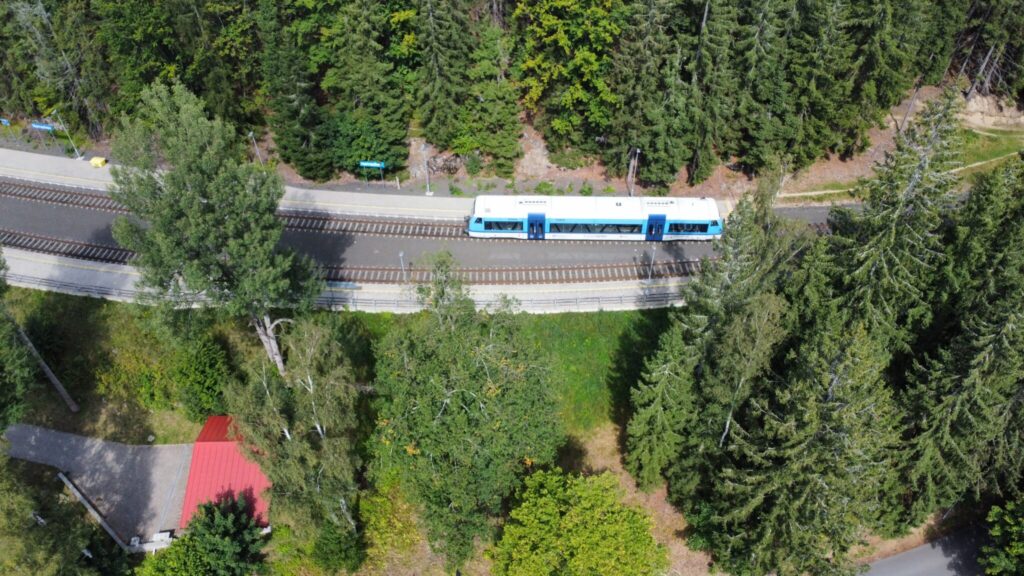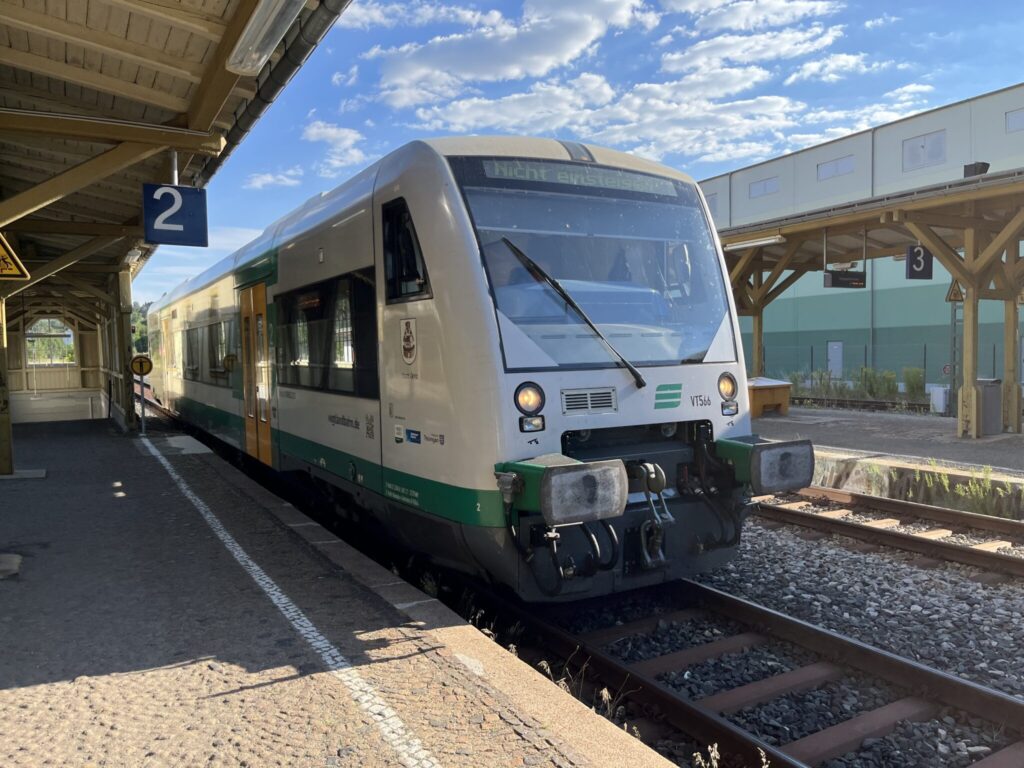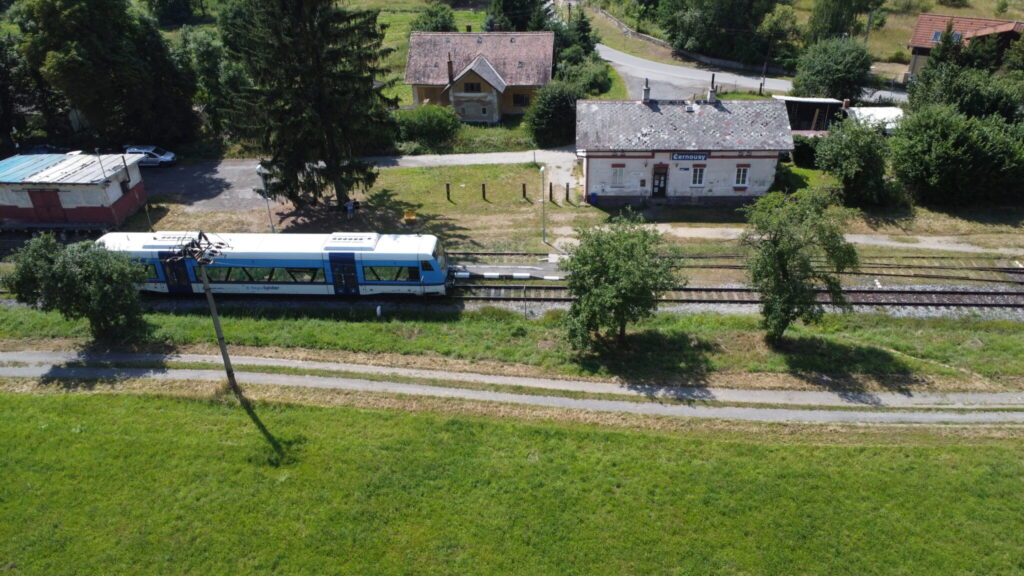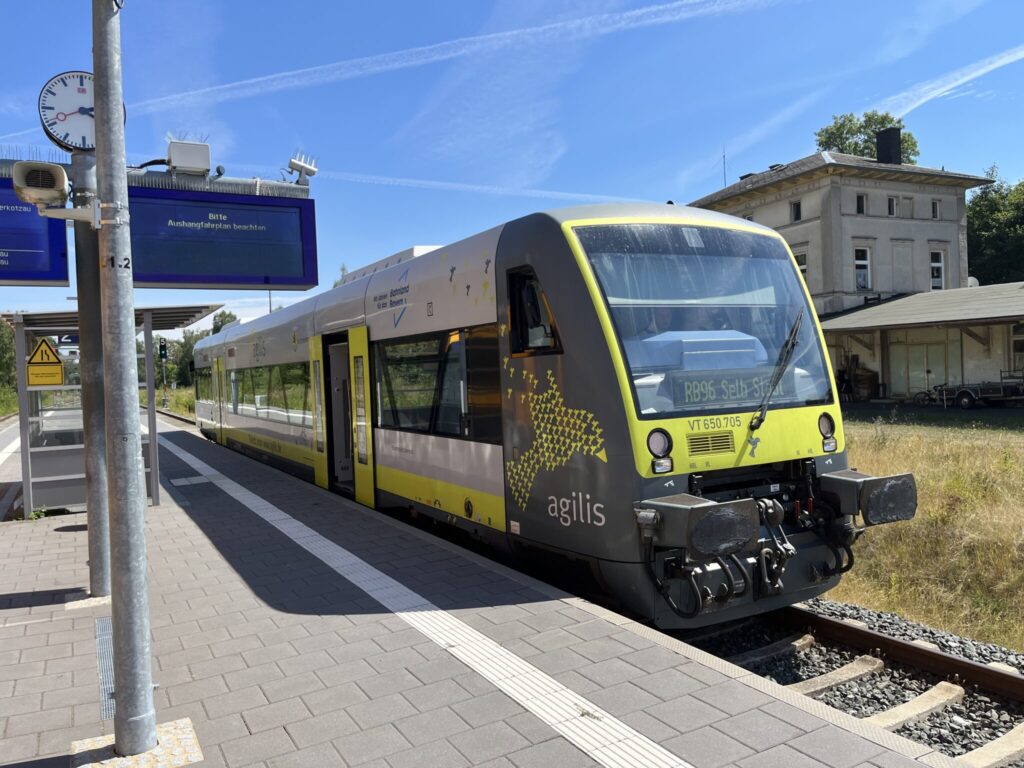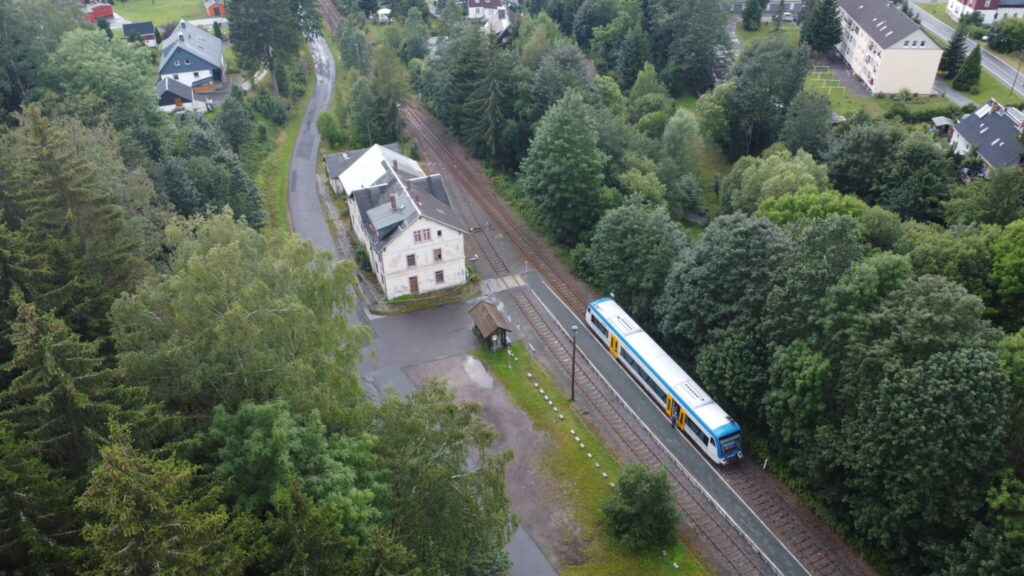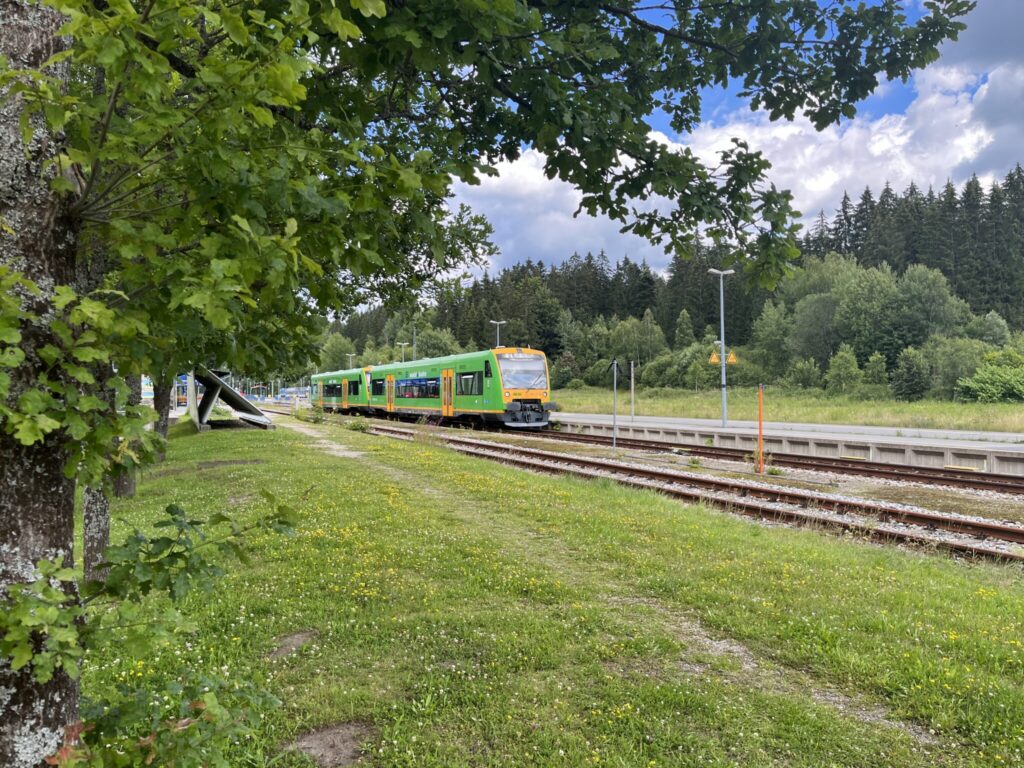The Stadler RS Zero: the new solution to save the smallest branch lines
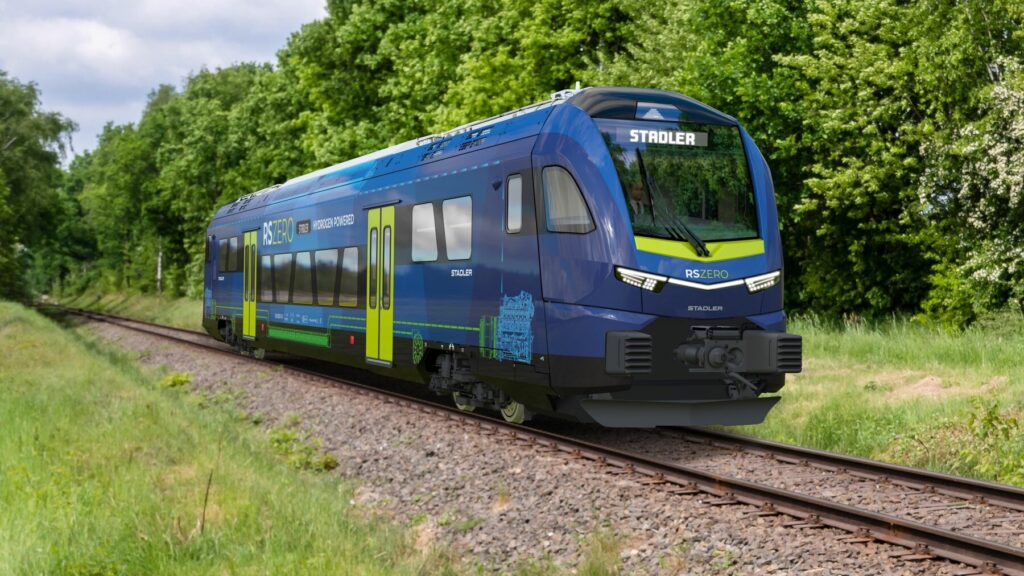
Harrachov, Czechia
Adorf (Vogtland), Germany
Černousy, Czechia
Selb-Plößberg, Germany
Holzhau, Germany
Bayerisch Eisenstein, Germany
On the smallest branch lines in Germany and Czechia (and even just into Poland on one line) you will find them – Stadler RS1 railbuses, with their characteristic trapezoid shaped windows. Built between 1996 and 2013 these trains saved many rural lines. Light weight, cheap to operate, fast acceleration on lines with many stops and steep gradients, solid passenger comfort, modular interior, high redundancy of components, one or two staff operation, and the best accessibility of any small train, made the series a hit – nearly 500 of them were sold.
But with the end of life of many RS1s on the horizon, and with railway operators seeking alternatives to diesel power – even on branch lines – what comes next?
That was the question that Stadler Rail Germany has sought to answer, and today the RS1 follow up – the RS Zero – was presented in Pankow and I was there to see it. Railcolor also has more details and pictures here.
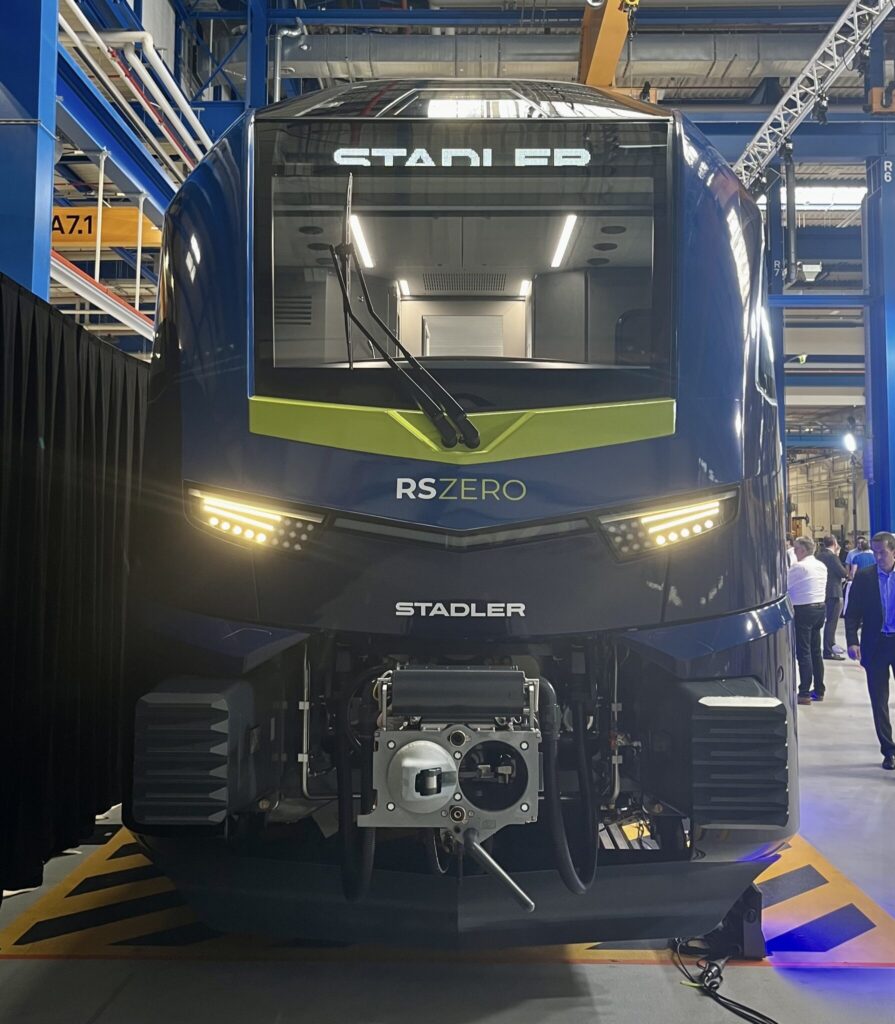
The new RS Zero takes the best of the RS1 and builds on it. Out go the diesel engines, replaced instead by either a battery-electric or hydrogen fuel cell drive train. I’m personally rather sceptical of hydrogen trains (see this older post for the reasoning), and I expect most RS Zero trains will be battery electric. Batteries can be charged with a pantograph in terminus stations, and the train can also run in pure electric mode. And while the RS1 was only available as a single carriage version, a two carriage RS Zero will also be available.
But if you take a step back, why do this at all? Why design trains this small? And design them as proper trains – including full TSI crash worthiness? And why bother with battery electric or hydrogen instead of putting up an overhead wire?
The answer to that comes with typical Stadler clarity of thinking.
Just over 60% of Germany’s rail network is electrified currently, and the aim by 2030 is to hit 75% – although no one really believes that will happen. So Stadler is pitching this train for the non-electrified or partly electrified parts of the network. Stadler is building for the network as it is, not the network we dream we might have in the future. And there is not really any rival product for these sorts of lines – the two carriage Siemens Mireo Plus B is the closest there is.
Making it a regular train facilitates the operation – in all of the six example cases with RS1s I cite above, tracks are either shared with freight trains, or terminus stations are on mainlines. You cannot easily split off a line from the rest of the network, and run something super light or super bespoke there – France is trying this with Flexy2, but I see very few use cases for this. Other theoretical solutions – like autonomous trains – rely on as yet unproven technology. Stadler is taking something that is proven to work, and building on it.
But who needs a train this small you might be wondering?
Again out of experience there are plenty of places that do – the tiny villages on the Waldbahn network to Bayerisch Eisenstein for example. Yes, you might offer these people a bus instead, but a bus remains a poor substitute. It gets stuck in traffic. It does not convey bikes. It does not have a disabled accessible toilet. And – once you have taken the branch line to a terminus – you connect with a long distance train there. A train line, even one with thin user numbers, brings opportunities for small places. Trust me, I have been to a lot of those places, especially in Thüringen, Sachsen and in parts of the north of Czechia. And the RS Zero, while designed first for Germany, could easily be deployed pretty much anywhere in Europe with the standard loading gauge and standard gauge lines (1435mm).
The need here is simple. If you can provide people a passenger train service, you should. However sparsely populated a region, however small the place. Stadler’s RS Zero is a sensible, thoughtful, eminently pragmatic solution for those sorts of places, the places where anything more than a stopping service on a branch line is impossible.
The post The Stadler RS Zero: the new solution to save the smallest branch lines appeared first on Jon Worth.
Source: https://jonworth.eu/the-stadler-rs-zero-the-new-solution-to-save-the-smallest-branch-lines/
Anyone can join.
Anyone can contribute.
Anyone can become informed about their world.
"United We Stand" Click Here To Create Your Personal Citizen Journalist Account Today, Be Sure To Invite Your Friends.
Humic & Fulvic Liquid Trace Mineral Complex
HerbAnomic’s Humic and Fulvic Liquid Trace Mineral Complex is a revolutionary new Humic and Fulvic Acid Complex designed to support your body at the cellular level. Our product has been thoroughly tested by an ISO/IEC Certified Lab for toxins and Heavy metals as well as for trace mineral content. We KNOW we have NO lead, arsenic, mercury, aluminum etc. in our Formula.
This Humic & Fulvic Liquid Trace Mineral complex has high trace levels of naturally occurring Humic and Fulvic Acids as well as high trace levels of Zinc, Iron, Magnesium, Molybdenum, Potassium and more. There is a wide range of up to 70 trace minerals which occur naturally in our Complex at varying levels. We Choose to list the 8 substances which occur in higher trace levels on our supplement panel. We don’t claim a high number of minerals as other Humic and Fulvic Supplements do and leave you to guess which elements you’ll be getting.
Order Your Humic Fulvic for Your Family by Clicking on this Link, or the Banner Below.
Our Formula is an exceptional value compared to other Humic Fulvic Minerals because...
It’s OXYGENATED
It Always Tests at 9.5+ pH
Preservative and Chemical Free
Allergen Free
Comes From a Pure, Unpolluted, Organic Source
Is an Excellent Source for Trace Minerals
Is From Whole, Prehisoric Plant Based Origin Material With Ionic Minerals and Constituents
Highly Conductive/Full of Extra Electrons
Is a Full Spectrum Complex
Our Humic and Fulvic Liquid Trace Mineral Complex has Minerals, Amino Acids, Poly Electrolytes, Phytochemicals, Polyphenols, Bioflavonoids and Trace Vitamins included with the Humic and Fulvic Acid. Our Source material is high in these constituents, where other manufacturers use inferior materials.
Try Our Humic and Fulvic Liquid Trace Mineral Complex today. Be 100% Satisfied or Receive a Full Money Back Guarantee. Order Yours Today by Following This Link.




